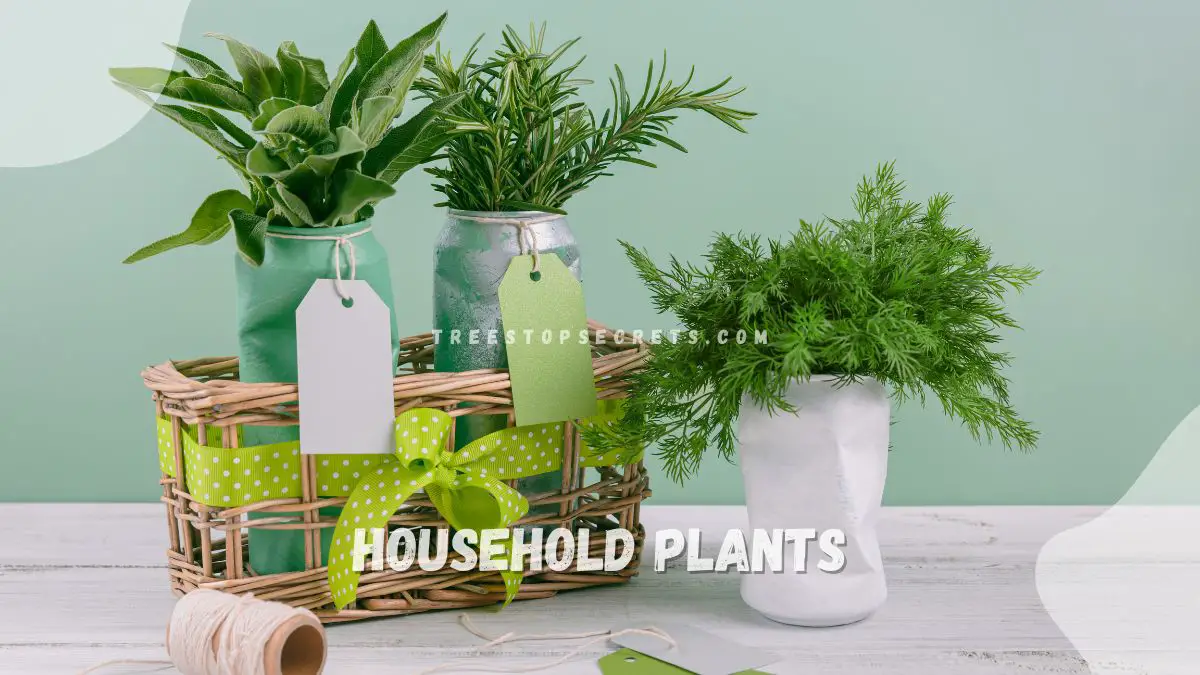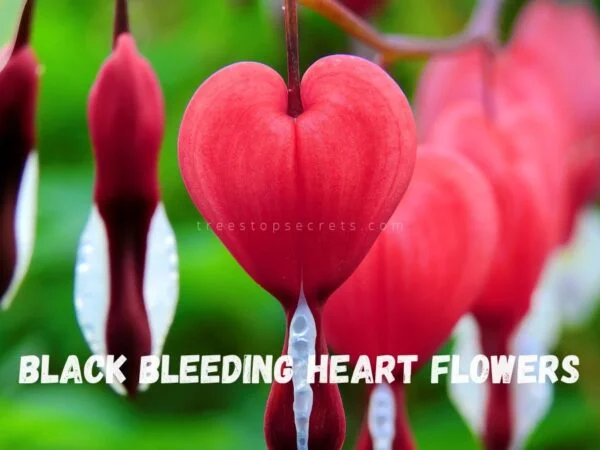Looking to brighten up your living space effortlessly? Common household plants are the answer. These friendly houseplants not only add a touch of nature but also purify the air you breathe. From vibrant succulents to low-maintenance spider plants, there's a perfect match for every corner of your home. Embrace the benefits of improved air quality and a boost in mood with these easy-to-care-for botanical beauties.
Key Takeaways
- Regularly check the moisture levels of your common household plants to avoid overwatering or underwatering.
- Provide adequate sunlight based on the specific light requirements of each plant to ensure healthy growth.
- Prune and remove dead leaves to promote new growth and prevent diseases in your houseplants.
- Address common issues like yellowing leaves or pests promptly by referring to specific care guides for effective solutions.
- Fertilize your plants during the growing season to enhance their growth and overall health.
- Incorporate decorative ideas like hanging planters or terrariums with houseplants to add a touch of greenery and style to your living space.
Popular Houseplants Overview
Top Picks
When it comes to popular houseplants, experts recommend a variety of options. The Spider Plant is a favorite, known for its air-purifying qualities and easy care. Another top choice is the Snake Plant, which thrives in low light and requires minimal watering. The Pothos plant is beloved for its trailing vines and ability to thrive in various light conditions. For a touch of elegance, the Peace Lily is a popular choice with its striking white flowers. Lastly, the ZZ Plant stands out for its tolerance to neglect and low-light environments.
These common household plants are popular due to their unique features. The Spider Plant's arching leaves add a decorative touch, while the Snake Plant's vertical growth is perfect for small spaces. Pothos' cascading vines create a lush look, and the Peace Lily's blooms bring a sense of tranquility. The ZZ Plant's glossy foliage adds a modern flair to any room. These plants not only beautify indoor spaces but also improve air quality, making them essential additions to any home.
Care Basics
To ensure the well-being of houseplants, it is crucial to understand their care requirements. Watering frequency varies among plants; while some prefer moist soil, others thrive in drier conditions. Adequate sunlight is essential for photosynthesis, so place plants near windows or under grow lights accordingly. Each plant has specific soil preferences, such as well-draining mixtures or moisture-retentive soils. Regular maintenance tasks like pruning, dusting leaves, and repotting when necessary contribute to overall plant health.
Maintaining proper care practices is vital for the longevity of common household plants. Overwatering can lead to root rot, while insufficient sunlight may cause stunted growth. Understanding each plant's specific needs ensures optimal health and growth. By following watering schedules, providing adequate light exposure, and using suitable soil mixes, plant owners can enjoy vibrant and thriving indoor greenery.
Selection Tips
When selecting perfect houseplants for your home, consider factors like space availability and lighting conditions. Choose plants that complement your living area's size and layout; compact varieties suit smaller spaces, while larger plants make a statement in spacious rooms. Consider growth habits as well; upright plants like Dracaenas are ideal for vertical interest, while bushy varieties like Fiddle Leaf Figs fill empty corners beautifully. Aesthetic appeal plays a significant role too; select plants that align with your interior design style for a cohesive look.
Matching houseplants to interior design styles enhances the overall ambiance of a space. Sleek modern rooms benefit from minimalist plants like Snake Plants or ZZ Plants, while Bohemian-style interiors thrive with lush ferns or hanging Pothos. By harmonizing plant selection with decor themes, homeowners can create visually appealing and inviting environments that reflect their personal style.
Essential Care Tips
Watering Needs
Common household plants have varying watering requirements. Some like moist soil, while others prefer drier conditions. Overwatering can lead to root rot, yellowing leaves, and mold growth. Underwatering causes wilting, browning of leaf edges, and stunted growth. It is essential to understand the specific needs of each plant species. Spider plants and Peace lilies, for example, enjoy consistently moist soil, while cacti and succulents thrive in well-draining soil that dries out between waterings. To prevent overwatering, always check the soil moisture level before watering.
Sunlight Requirements
Understanding the sunlight needs of your plants is crucial for their overall health. Insufficient light can result in leggy growth and pale leaves, while too much light may cause sunburn and leaf scorch. Plants like Snake plants and ZZ plants can tolerate low light conditions, making them perfect for areas with limited sunlight. On the other hand, Fiddle leaf figs and Aloe vera require bright, indirect light to thrive. Consider rotating your plants periodically to ensure even light exposure on all sides.
Soil Advice
The type of soil used for common household plants plays a significant role in their well-being. Well-draining soil is vital as it prevents waterlogged conditions that can lead to root rot. Opt for potting mixes specifically formulated for indoor plants, ensuring good aeration and drainage. A mix of peat moss, perlite, and vermiculite provides an ideal environment for root development and nutrient absorption. Avoid using garden soil, which tends to compact in containers and restrict root growth.
Plant Profiles
Foliage Favorites
Snake Plant
Snake plants, known for their resilience, are popular houseplants due to their easy care. These plants feature tall, sturdy leaves with striking patterns. They thrive in low light conditions and require minimal watering.
Monstera
The Monstera plant stands out with its iconic split leaves, adding a tropical touch to any space. Their growth is characterized by leaf fenestrations, creating a unique aesthetic. To care for Monstera plants, ensure they receive indirect sunlight and moderate watering.
Blooming Beauties
Peace Lily
Peace Lilies are beloved for their elegant white flowers and air-purifying qualities. These plants have low maintenance needs, making them ideal for beginners. To encourage blooming, keep the soil consistently moist and provide occasional misting.
African Violet
African Violets charm with their vibrant blooms and compact size, perfect for small spaces. These plants require specific watering practices to prevent root rot. Maintain humidity levels by placing the plant on a pebble tray to support healthy growth.
Unique Varieties
Air Plant
Air plants are intriguing additions to any indoor garden as they don't need soil to thrive. These plants absorb moisture through their leaves and require regular misting or soaking. Get creative with display ideas by using shells or hanging containers.
String of Pearls
String of Pearls succulents captivate with their cascading appearance and water-saving adaptations. These plants store water in their spherical leaves, reducing watering frequency. Propagate String of Pearls by planting cuttings in well-draining soil and avoid overwatering to prevent rot.
Specific Care Guides
Snake Plant Guide
Snake plants are low-maintenance and can thrive in various conditions, making them perfect for beginners. They prefer indirect light and well-draining soil to prevent root rot. Ensure the soil dries out between waterings to avoid overwatering.
- Pros:
- Air purifying qualities
- Low water requirements
- Cons:
- Susceptible to root rot if overwatered
- Sensitive to cold temperatures
When repotting a snake plant, choose a pot with drainage holes to prevent waterlogging. Gently remove the plant from its current pot, shake off excess soil, and place it in the new container with fresh soil.
Spider Plant Guide
Spider plants are known for their air-purifying abilities and easy propagation through their baby spiderettes. They thrive in bright, indirect light and require well-draining soil. To prevent browning tips, maintain moderate humidity levels.
- Care Instructions:
- Water when the top inch of soil is dry
- Fertilize sparingly during the growing season
- Propagation Methods:
- Place spiderette in water until roots form
- Transfer to soil once roots are established
Pests like spider mites can be a common issue with spider plants. Regularly check the undersides of leaves for any signs of infestation and treat promptly.
Rubber Plant Guide
Rubber plants add a touch of elegance to indoor spaces with their glossy leaves and upright growth habit. They thrive in bright, indirect light and prefer slightly moist soil. Avoid placing them in drafty areas to prevent leaf drop.
- Water Requirements:
- Water when the top inch of soil feels dry
- Reduce watering during winter months
- Pruning Tips:
- Trim leggy stems to encourage bushier growth
- Remove any yellowing leaves promptly
Shaping a rubber plant can be done by pruning the top growth to control its height or trimming side shoots to promote a fuller appearance.
Monstera Guide
Monstera plants are prized for their unique fenestrated leaves and trailing vines, adding a tropical touch to any space. They require bright, indirect light and well-draining soil to thrive. Rotate the plant occasionally for even growth.
- Leaf Structure:
- Fenestrations develop as the plant matures
- Split leaves indicate a healthy Monstera plant
- Common Issues:
- Yellowing leaves may signal overwatering
- Brown spots could indicate sunburn or nutrient deficiencies
Troubleshooting Monstera plant issues involves adjusting watering frequency, ensuring proper lighting, and addressing any pest problems promptly.
Troubleshooting Tips
Common Issues
Indoor plants commonly face issues like yellowing leaves due to overwatering or inadequate light. Wilting can result from underwatering, while brown tips may indicate low humidity. To address these, adjust watering frequency, light exposure, and humidity levels.
- Pros:
- Easy identification of plant issues.
- Simple solutions for common problems.
- Cons:
- Requires regular monitoring.
- Some issues may need time to resolve properly.
Symptoms of plant distress include drooping leaves, leaf spots, and stunted growth. These signs can signal nutrient deficiencies, pests, or diseases. Regularly inspect plants for such symptoms and take appropriate action promptly.
Pest Management
Common pests like aphids, spider mites, and mealybugs can harm indoor plants. Identify pests by checking for visible bugs, webs, or sticky residue on plant leaves. Use natural remedies like neem oil or insecticidal soap for chemical-free pest control.
- Neem oil spray
- Insecticidal soap solution
Prevent pest infestations by regularly cleaning plant leaves, maintaining good airflow, and isolating new plants before introducing them to your existing collection.
Reviving Plants
Strategies for reviving struggling houseplants include repotting in fresh soil, trimming dead foliage, and adjusting watering schedules. Assess plant health by checking roots for rot and inspecting leaves for discoloration or pests.
- Steps for Reviving Plants:
- Trim dead leaves.
- Repot in fresh soil.
Creating a conducive environment for plant recovery involves providing adequate sunlight, proper watering, and occasional fertilization. Monitor the plant's progress closely and make adjustments as needed.
Enhancing Growth
Fertilizing Tips
Fertilizing indoor plants is essential for their growth as it provides nutrients that may be lacking in the soil. Different types of fertilizers, such as liquid, granular, and slow-release, offer various benefits to plants. Applying fertilizer according to the plant's specific needs ensures optimal growth.
- Liquid fertilizers are quick-acting and ideal for plants that require frequent feeding.
- Granular fertilizers release nutrients slowly over time, suitable for plants with lower nutrient requirements.
- Slow-release fertilizers provide a steady nutrient supply, reducing the frequency of application.
Creating a fertilizing schedule based on the plant's growth phase and seasonal changes helps maintain a healthy balance of nutrients. For example, flowering plants may need more phosphorus during blooming periods, while foliage plants benefit from higher nitrogen levels for leaf development.
Pruning Practices
Pruning is crucial for houseplants to remove dead or diseased parts, encourage new growth, and maintain overall plant health. Knowing when and how to prune different plant species is key to promoting healthy growth and preventing issues like overcrowding.
- Regular pruning helps improve air circulation around plants, reducing the risk of pests and diseases.
- Pruning also stimulates the growth of new shoots and branches, leading to a fuller and healthier plant appearance.
Guidelines for pruning include using sharp, clean tools to make precise cuts without causing damage to the plant. When pruning, focus on removing dead or yellowing leaves, leggy stems, or any parts that hinder the plant's growth.
Repotting Basics
Repotting houseplants is vital for their well-being as it allows for better root development, nutrient absorption, and prevents root-bound conditions. Signs that indicate a plant needs repotting include roots growing through drainage holes, slow growth, or soil drying out quickly.
- Before repotting, prepare a larger pot with fresh potting mix suitable for the plant species.
- Gently remove the plant from its current container, loosen the roots, and place it in the new pot at the same depth.
- Fill in with additional soil, water thoroughly, and place the plant in an appropriate location based on its light requirements.
Decorative Ideas
Display Techniques
Indoor plants can enhance home décor in various living spaces. To display them creatively, consider using different containers and stands. For example, hanging plants in bathrooms can add a touch of greenery and freshness to the space. To create aesthetically pleasing plant arrangements, mix different plant heights and textures.
- Containers: Use bronze pots or ceramic planters for a sophisticated look.
- Stands: Opt for wooden or metal stands to elevate plants and create visual interest.
Pairing Plants
Pairing different houseplants is an art that can create visual harmony in your home. When selecting plants, consider their care needs to ensure they thrive together. For instance, pairing a low-light plant like a snake plant with a heartleaf philodendron can complement each other's needs. This combination adds depth and texture to your indoor garden.
- Consider the light requirements of each plant.
- Group plants with similar watering needs together.
Seasonal Themes
Exploring seasonal themes for decorating with indoor plants can bring a fresh look throughout the year. Choose plant varieties that thrive in different seasons to keep your space vibrant. Transitioning plants between indoor and outdoor environments can help maintain their health and growth.
- Spring: Opt for flowering plants like orchids or peace lilies.
- Summer: Choose tropical plants such as ferns or palms.
- Fall: Incorporate succulents or cacti for a seasonal touch.
Closing Thoughts
You've now gained a comprehensive understanding of popular houseplants, essential care tips, plant profiles, specific care guides, troubleshooting tips, enhancing growth, and decorative ideas. By following these guidelines, you can create a thriving indoor garden that adds beauty and freshness to your living space. Remember to tailor your care routines to each plant's unique needs for optimal growth and health.
Now it's time to roll up your sleeves and put your newfound knowledge into action. Get your hands dirty, nurture your plants, and watch them flourish under your care. Share your successes with fellow plant enthusiasts and continue learning to expand your green thumb skills. Your indoor oasis awaits – happy planting!
Frequently Asked Questions
What are some popular houseplants to consider for my home?
Snake plant, pothos, spider plant, peace lily, and ZZ plant are popular choices. They are easy to care for and can thrive in various light conditions.
How can I ensure the proper care of my houseplants?
Ensure your plants receive adequate sunlight, water them appropriately, provide proper drainage, and maintain the right humidity levels. Regularly inspect for pests and diseases.
Can you provide tips on enhancing the growth of houseplants?
Rotate your plants for even growth, fertilize during the growing season, prune when necessary, repot when root-bound, and provide sufficient airflow around the plants.
What are some common issues faced while caring for houseplants?
Overwatering, underwatering, inadequate light exposure, pests infestation, and incorrect temperature levels are common issues. Address these promptly to ensure the health of your plants.
How can I incorporate decorative ideas with houseplants in my living space?
Consider using hanging planters, terrariums, macramé plant hangers, decorative pots, and shelves to display your plants creatively. Mix different plant heights and textures for an aesthetically pleasing look.
Image Source: Paid image from CANVA




